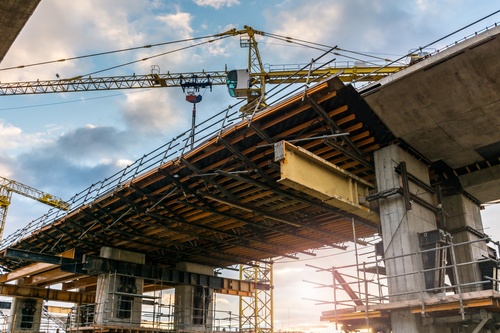
On July 23, 2020, the California Transportation Foundation convened a panel of transportation professionals for the webinar “Transportation Outlook: Moving Beyond COVID-19.” The panelists discussed the impacts of the coronavirus and what the future holds for California’s transportation sector in the wake of the pandemic.
Below are key takeaways from the panel:
Adjusting to a “New Normal”
- COVID-19 has significantly altered the way some Californians commute to work; remote work could become a permanent feature of the post-pandemic economy.
- Transit agencies are actively preparing for a future where telecommuting is commonplace, and transit will need to evolve to account for long-term decreases in ridership and travel patterns.
- Transit agencies are implementing thorough sanitation protocols in conjunction with face covering requirements, and are devising programs to educate the public about the effectiveness of such measures in combating the spread.
Financial Outlook
- State and local ordinances aimed at limiting transmission of the coronavirus will continue to negatively impact sales and use tax revenue, one of the primary funding sources for the state’s transportation projects.
- The passage of the Road Repair and Accountability Act of 2017(SB1) came at the perfect time, providing much-needed funding for the state’s transportation projects.
- With urgent need for trillions of dollars in federal unemployment relief, there is little optimism that Congress will pass additional spending measures for infrastructure stimulus before national elections in November.
COVID-19’s Effects on the Construction Industry
- The industry was grateful that state leaders designated construction to be essential work, which protected construction workers’ livelihoods while also ensuring progress on critical transportation projects.
- The construction industry has shown that it can build projects safely during the pandemic by coordinating closely with state and local authorities, and devising safety measures to ensure construction workers have adequate protective equipment and physical distancing while on the job.
- The construction industry will continue to face difficulties in developing and implementing scheduling, staffing and operational guidelines to comply with different local orders that change frequently.
Silver Linings for the Future
- Although the pandemic has resulted in significant adverse impacts for the transportation sector, there have been bright spots, including:
- Public agencies using the pandemic to rethink how to better serve the public’s transportation needs, in particular for California’s low-income and underserved communities.
- Acceleration of existing construction projects due to lighter traffic.
- Fewer cars on the road perhaps providing a preview of California’s transportation future, with lower congestion and the growing prevalence of active transportation, such as walking and biking.
- Although funding sources for transportation remain unclear, public agencies could be taking advantage of lower material costs and increased competition among contractors to procure projects below budget; uncertainties remain regarding workforce impacts, supply chain impacts and related cost of materials.
An end to the coronavirus pandemic is far from certain, but these difficult times have underscored the transportation sector’s resilience. By the panel’s conclusion, it was clear that the collaborative spirit and problem-solving mindset of those working in the transportation industry have been essential to weathering a global crisis over the last several months, and that such qualities will continue to shape California’s transportation future.
Nossaman’s 30-plus infrastructure attorneys offer clients, colleagues, strategic partners and industry media a wealth of practical experience, insider insight and thoughtful analysis here on Infra Insight. We blog about what we know best, from industry-leading procurements to local and national policy developments that affect the market and our clients.
Stay Connected
 RSS Feed
RSS Feed
